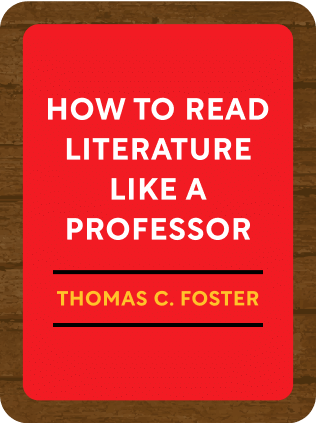

This article is an excerpt from the Shortform book guide to "How to Read Literature Like a Professor" by Thomas C. Foster. Shortform has the world's best summaries and analyses of books you should be reading.
Like this article? Sign up for a free trial here .
What are the two kinds of violence in literature? What does it mean when an author includes violence in a story?
In literature, acts of violence are almost always a symbol of some greater kind of suffering. There are two common forms of violence: when a character harms himself or others, and when narrative harm happens to a character.
Continue reading to learn about the two kinds of literary violence.
Symbolic Meaning of Actions
For most readers, recognizing objects as symbols comes easy, but it can be quite difficult to understand that actions can act as symbols, too. Even violence in literature can act as a symbol for something else.
Authors choose the actions that happen in a narrative carefully—each action must serve the plot in a novel, but some will also illuminate larger themes.
Violence in Literature
Violence is prevalent in literature, but it is important to know that acts of violence are always a symbol for some greater kind of suffering. The range of possibilities for what that suffering might be is too large to generalize. The answer might be psychological, spiritual, historical, social, or political.
- The exception to this rule is mystery novels. In a mystery, the murder is clear-cut because the complexities lie in the uncovering of the truth.
In literary violence, the complexities lie in the significance or thematic meaning of the violence itself.
The Two Kinds of Violence
There are two kinds of violence in literature:
- A specific harm that characters inflict on each other or themselves
- General harm that is caused by the author as part of the narrative
The only real difference between these two kinds of literary violence is that in the second type, there is no guilty party other than the author. Even an “accidental” act of violence in a novel has been carefully planned by the author, with a specific purpose in mind.
Whether violence is inflicted by a character within the story or the author crafting the story, the reader should look carefully at what the violence might signify beyond the specific harm done to the specific character.
Example: Go Down, Moses
William Faulkner’s Go Down, Moses is a great example of violence as metaphor in literature. In it, character Ike McCaslin finds out that his grandfather had a daughter by one of his slaves, Eunice. Years later, completely blind to the wrongness of his actions, the grandfather also gets his daughter Tomasina pregnant. Eunice responds by killing herself.
As a reader, of course, we see Eunice’s violence toward herself as a literal act of personal despair. But Faulkner also challenges us to see it as a powerful metaphor for the lack of humanity in slavery. Eunice has no control over her own life or the life she brings into the world. The only choice she is given is the choice to die.
The title Go Down, Moses helps the reader grasp this metaphor. In the Bible, Moses is asked to “go down” and “set my people free” from Egypt. In the story, no one appears to go down and set Eunice free. Therefore, she has to set herself free in the only way she’s able.

———End of Preview———
Like what you just read? Read the rest of the world's best book summary and analysis of Thomas C. Foster's "How to Read Literature Like a Professor" at Shortform .
Here's what you'll find in our full How to Read Literature Like a Professor summary :
- How to get more out of the novels that you read
- Why you should focus on memory, symbols, and patterns to understand literature better
- Why sex scenes aren't always about sex






